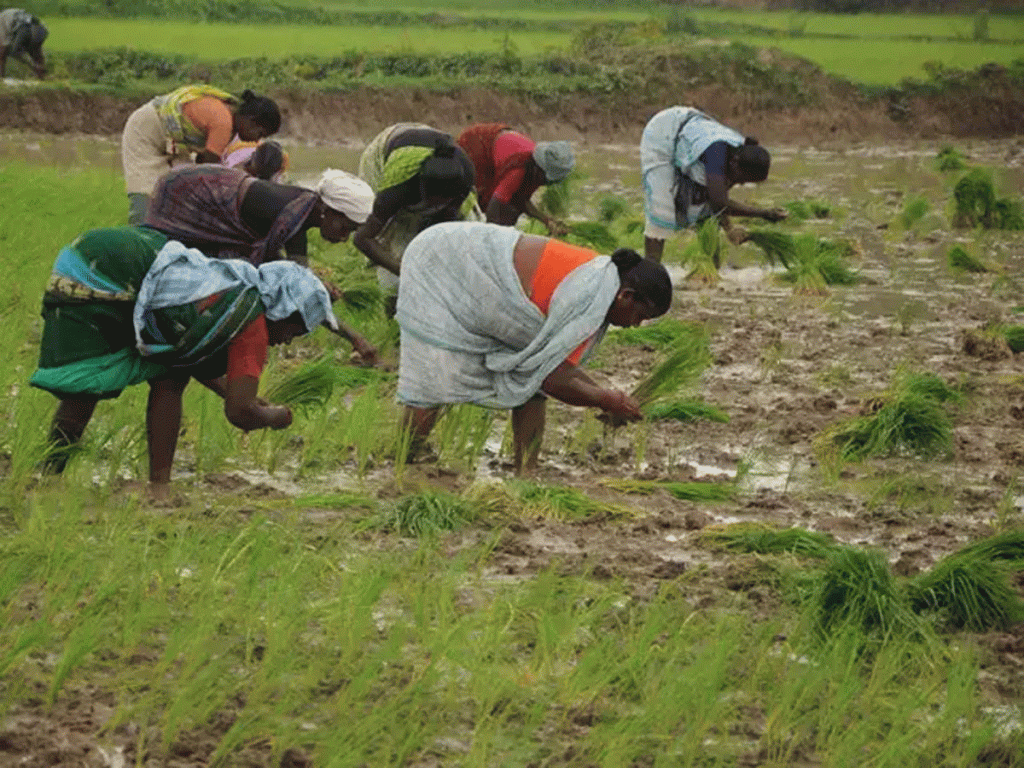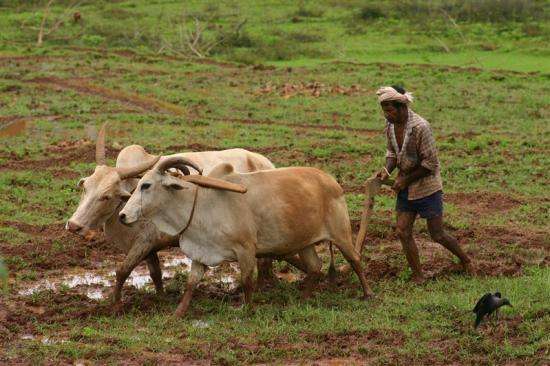A few years ago, few had a serious debate with me rationalizing that the Government of India should stop purchasing crops like paddy and let the farmers decide the price. One guy with a master’s in economics degree was suggesting that if the Government leaves the market and let the farmer decide the paddy price, farmers will get a better price for their products.
Then, I had argued that such a suggestion is stupid because as soon as Government stops purchasing paddy through MSP (Minimum Support Price), the price of the cash crops especially paddy and wheat would collapse. The reason is simple, the production of paddy and wheat in India is higher than the need of the country, so pilling of excess production is easy for next year to manipulate the price.
Just like onion and potato, traders can easily manipulate by pilling excess stock. At that time those individuals labeled me as a capitalist. Today many of those individuals are standing with the protesting farmers from Punjab and Haryana who are fighting against market price to keep MSP. I have nothing against those individuals as I am well aware of the doublespeak.
Many such individuals selectively stand, write, and give an opinion to seek Government and international funding sources for their activities and survival. Coming back to MSP, then is it what the Government of India trying to do so?
The answer is NO! Let’s look into it a bit in detail. The government of India made an ordinance in June 2020 on Indian farm reforms and the parliament subsequently approved and made this ordinance into three laws in September 2020.
The main objectives of these laws are to expand the trading area of farmers from selected areas to any place within India, encourage e-commerce and electronic trading, give farmers the legal framework to have pre-arranged contracts with buyers and, remove foodstuffs from the list of essential commodities that will limit stocking limit.
When we look at it closely, private players may bring competitiveness to the market, and removing the stocking limit will potentially affect the price, especially for cash crops like paddy/rice and wheat. The basic economic theory teaches that when demand falls, price always falls. Thus, the price of paddy and wheat are expected to fall. But it is not the complete story. The laws also protect the farmers as Government purchasing will continue along with private parties and there is nothing in the laws that stops MSP for foodstuffs.
The government has further clarified that it is willing to impose MSP on private companies to calibrate the price. Then why is the current protest of farmers in India? Why the farmers from Punjab and Haryana so worried and against these laws? Interestingly, the protesting farmers are not able to clearly explain why they are insisting to withdraw these laws except continuing to confuse everyone using MSP price that the Government has already clarified to address if needed! Indeed, the actual reason is a bit complex besides the politics of several opposition parties.
Let us compare a few statistics. In 2015-16, the rice and wheat procured by the Government of India from Punjab, Haryana, and western Uttar Pradesh (less than 5 % of area/population of the country) alone was 56% of total procurement in the whole of India. That means procured from the rest of India, which includes bigger states like a large part of Uttar Pradesh, Bihar, West Bengal, Madhya Pradesh, Maharastra, Gujarat, Tamil Nadu, Karnataka, Andhra Pradesh, Telengana, Rajasthan, Odisha, Kerala, Assam, Chhattisgarh, Jharkhand, Uttarakhand, Himachal Pradesh, Goa, North Eastern states, etc. was just 44 %.
In 2018-19, wheat production procured was 80% for Haryana and 73 % for Punjab. In the last 3 years, 89 % and 85% of non-Basmati rice were procured from Punjab and Haryana respectively that were consumed in other states. Interestingly, these two states are not a major consumer of rice whereas in major rice consuming states like South India or East India, the procurement percentage of rice was lower. For example, only 11 % of the total rice produced in West Bengal and 51 % of the total rice produced in Andhra Pradesh was procured in those years.
Most of the states cultivate rice/paddy for consumption whereas Punjab and Haryana cultivate rice to sell to other states. Government Mandis are well distributed around Delhi, Haryana, and Punjab region since the first green revolution whereas as the Mandi system is poorer and many locations do not have Mandis in other states, this gives a boost to farmers in Punjab, Haryana, and western Uttar Pradesh to sell their products directly to Government and get the benefit of MSP price for most of their wheat and paddy produced in these areas.
On the other hand, farmers from West Bengal, Andhra Pradesh, Bihar, Odisha, etc, sell a limited portion of their production in Madis. For instance, in Bihar, many farmers sell to private parties. For this one cannot blame the central Government. Since the first green revolution, Punjab and Haryana were feeding a large part of India, so there is a historical reason for higher procurement from these two states.
But over the years rice production in other states are increasing. As a cash crop, many farmers in other states are more and more switching to paddy when irrigation facilities are improving. Major rice-eating states like Odisha has become self-sufficient in producing rice for their consumption. Despite that, today a large amount of rice from Punjab is purchased and brought to Odisha for consumption through the public distribution system (PDS).

It is also true that the Narendra Modi Government has substantially increased the purchasing of paddy from other states like Uttar Pradesh, Rajasthan, Odisha, etc. Unfortunately, a large part of rice cultivated in Odisha is kept as stocking to guard food safety and finally gets rotten by wasting taxpayer’s money.
The new law will limit this stocking limit which will have the benefit to the nation. It will also allow farmers from other states to sell their products in Mandis in Punjab/Haryana/Delhi and allow traders from anywhere including those existing companies in Punjab/Haryana to do online trading to buy paddy from anywhere in the country. The majority of farmers of the rest of India are marginal and lower-income farmers. Many of these farmers rarely sell directly to Government Mandi and sell through middlemen or agents.
Even in Mandis most of these farmers in other states like Odisha suffer a loss of 5 to 20 kg of paddy per quintal as agent fees or Katni unlike farmers in Punjab/Haryana. When farmers can sell in any Mandis across India then the state quota of procurement will slowly meltdown and those Mandis that will give a better price will attract more farmers, thus, farmers in Punjab and Haryana will have to compete at the national level and lose the MSP price advantages.
A study shows that only 16 % of farmers in Punjab and Haryana are marginal or poor farmers and most of them are rich farmers. There is a greater chance that private companies will offer a good price to marginal and poor farmers compared to what they are getting now from the local agent. Private companies also can agree with many marginal and poor farmers for contract farming which will be a win-win proposal for marginal farmers and private companies.
Today many of the big private players who export Basmati and other rice from India to abroad are largely based in Punjab, Haryana, and Delhi region. If they could get a better price for paddy in e-commerce trading from the farmers in Odisha, Rajasthan, Bihar, or any other state, then farmers in Punjab/Haryana will lose their monopoly. In the process, the new competitive price may hurt rich farmers in Punjab and Haryana.
Nevertheless, if these facts are shared no marginal or poor farmers from other states will support the protesting farmers as the new laws will help marginal and poor farmers more than the rich ones. In the meantime, Punjabi celebrities and politicians have a great opportunity to milk the public sentiment of Punjab and Haryana.
For instance, Punjabi singer and actor Diljit Dosanjh instantly made close to a million new Twitter followers just by tweeting in favor of farmers’ protest. Akali Dal has its reasons to play in their state politics. Thus, supporting farmers’ cause is good but it should have some rational justification!
(The views expressed are the writer’s own)

Digambara Patra, M.Phil, PhD
Professor Department of Chemistry
American University of Beirut
Beirut, Lebanon
Web: http://myprofile.aub.edu.lb/dp03
( Images from the net )

